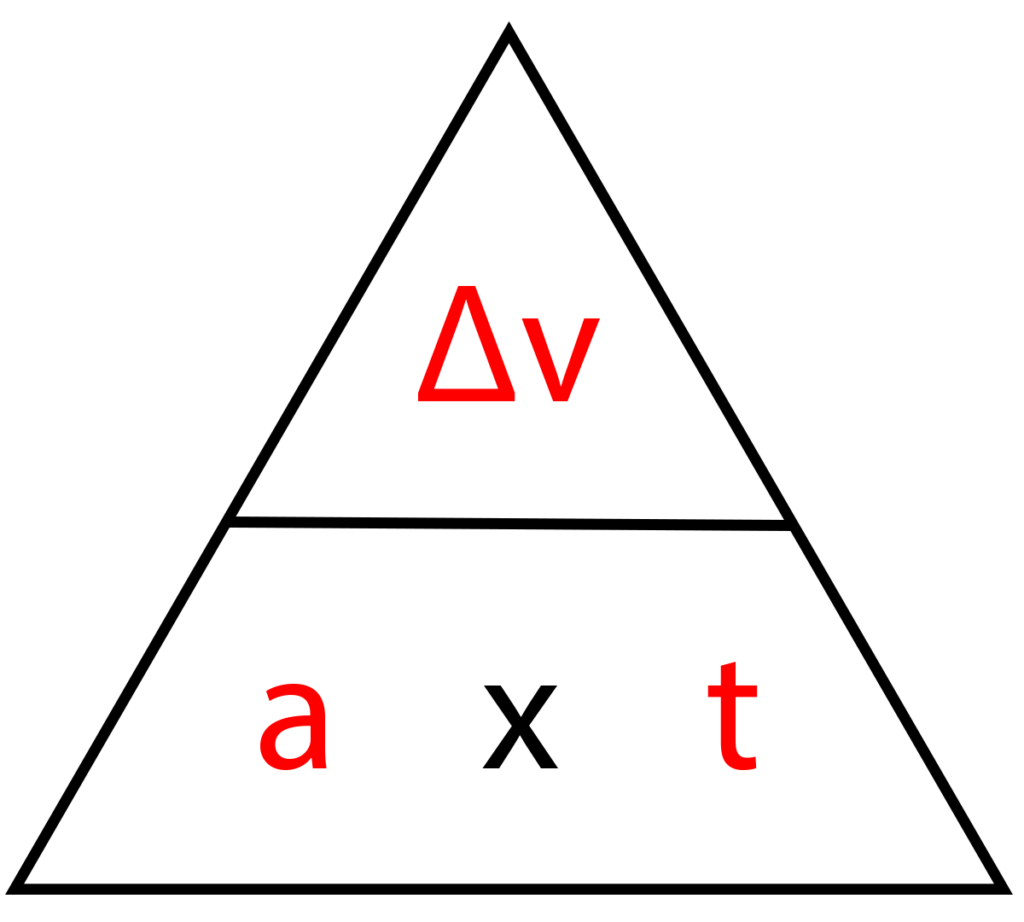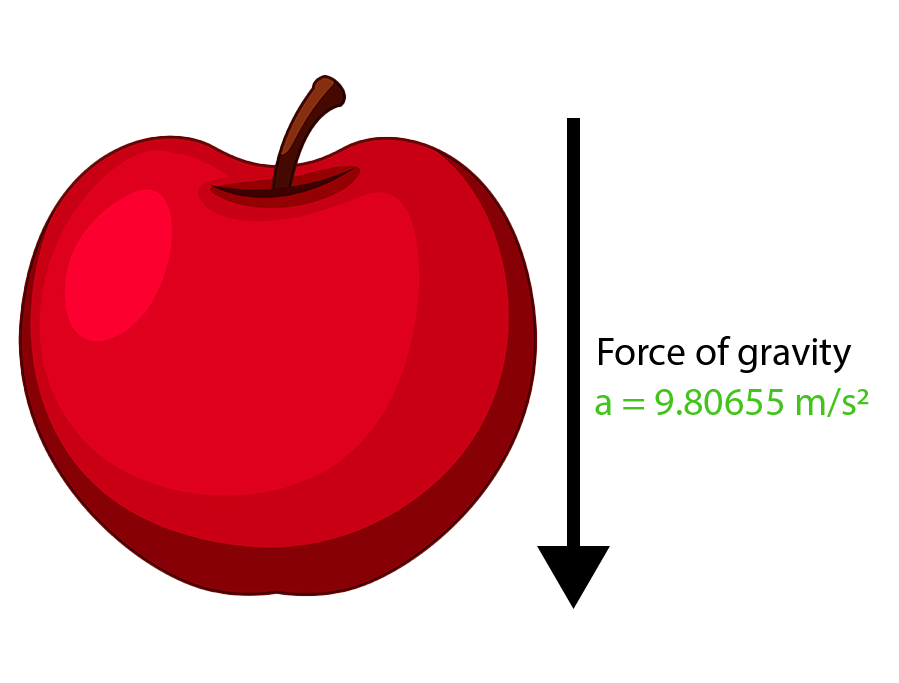What is acceleration?
Acceleration (a) is the change of velocity for a given object in motion with respect to time. The official SI unit of is m/s2. Newton’s second law states that the rate of acceleration for an object in motion is equal to the sum of all forces that act upon that object. It is a vector quantity. This means that apart from the magnitude, it also has a direction. The average acceleration of an object is calculated using the change of velocity ( Δv ) and the period ( Δt ).
a= \frac {\Delta v}{\Delta t}[\frac {\frac{m}{s}}{s}=\frac {m}{s^{2}}]When the magnitude is above 0, we are talking about acceleration. However, when it is below zero, we are talking about deceleration. Deceleration is the loss of velocity for a moving object.

Velocity and speed, while similar, are not the same. Speed is simply the rate at which a given object is moving, with no regard to direction. Velocity ascertains the object’s direction as well as the speed. Speed is a scalar quantity, while velocity is a vector quantity.
Linear motion
Linear motion is a motion along a straight line. In other words, the moving object doesn’t change its direction. There are two types of linear motion: uniform and non-uniform.
Uniform linear motion is one where, as well as the direction, the velocity is also constant (a=0). This will go on until an external force acts upon an object in uniform linear motion. If this does happen, the velocity and the direction of the object will change.
Non-uniform linear motion involves a change of velocity (a≠0) caused by an external force acting upon the object. The change of velocity can also be uniform and non-uniform.
If an object is moving along a straight line with uniform acceleration, we can calculate its velocity using the following formula:
v= v_{0}+a*tt represents the period of the object’s motion. v0 represents the initial velocity. If the object started moving from a standstill the initial velocity will be 0. If it was already in motion, v0 will be the velocity of the object before it started accelerating.
Acceleration formulas
Something that can help you for calculating acceleration is the pyramid:

Essentially, whatever you want to calculate, just cover it, and what is left will give you the formula. So, if you want to calculate acceleration, you would cover a, and what is left is:
a = \frac {\Delta v}{t}For the time (t) it would be:
t = \frac {\Delta v}{a}And for the change in velocity ( Δv ), it would be:
\Delta v= a \cdot tThe change of velocity can also be calculated by subtracting the initial velocity from the final velocity:
\Delta v = v-v_0If you want to calculate acceleration using the distance traveled (d[m]), you can use the following formula:
a=\frac {2*d-2*v_{0}*t}{t^{2}}Another way of calculating acceleration is through the formula for force (F [N]):
F= m*a \rightarrow a=\frac {f}{m}For more about force, check out our Force Calculator!
How to calculate acceleration?
Before this, we mentioned all the formulas you would need to calculate acceleration. Now, let’s do a quick example to show you what it’s all about.
Let’s say we have been given an object, and its initial velocity is 5 m/s. After 20 seconds of uniform acceleration, it has reached its final velocity of 250 m/s. What was the object’s acceleration?
a = \frac {v-v_0}{t} \\ a = \frac {250 \frac {m}{s}-5 \frac {m}{s}}{20s} \\ a = \frac {245 \frac {m}{s}}{20s} \\ a = 12.25 \frac {m}{s^2}So, the object was accelerating at a rate of 12.25 m/s2.
Of course, the simplest way to do this calculation is using our calculator.
Acceleration units
As we said, the official SI unit for acceleration is
\frac {m}{s^2}which is pronounced meters per second squared or meters per second per second. Out of course, there are many others. In the imperial system, the standard unit for acceleration is:
\frac {ft}{s^2}which is pronounced feet per second squared.
Gravitational acceleration
Gravitational acceleration is that of a falling object in a vacuum. It is completely uniform. This is because objects do not experience drag while in a vacuum. It is caused by the force of gravitational attraction, and it is the same for every object, regardless of its mass or composition. Gravimetry is the study of these rates.
The standard value is defined as exactly 9.80665 m/s2. However, it is often shortened to 9.81 m/s2. It varies slightly at different points on Earth’s surface.

Other forms of acceleration
Centripetal acceleration occurs when an object traverses a circular path. This happens because the direction is always changing, so the velocity has to as well. The product of this is acceleration. The formula for calculating it is:
a_{c}=\frac {v^{2}}{r}Proper acceleration is acceleration of an object relative to a free-fall condition. For example, during a rocket launch, the rocket is rapidly accelerating. The proper acceleration is what the occupants feel. We measure it with an accelerometer.
Instantaneous acceleration is the limit of the average acceleration over on infinitesimal (infinitely small) interval of time.
FAQ
What does acceleration mean?
Acceleration is the change of velocity with respect to time.
How to calculate acceleration?
The standard formula for calculating acceleration is a = Δv/Δt.
Can acceleration be negative?
If the value for acceleration is less than zero, it is called deceleration.
Is acceleration a vector?
Acceleration is a scalar quantity.
What is the difference between velocity and acceleration?
Velocity is the rate of change of an objects position, and it is a vector quantity. Acceleration is the rate of change of velocity, and it is a scalar quantity.
Why does my car shake when I accelerate?
Typically, this is due to a problem with the engine mounts or the suspension system.
Which equations can be used to solve for acceleration?
Another equation for calculating acceleration is a = F/m. For more formulas, check out our calculator.
What is acceleration measured in?
Acceleration is measured in m/s2 (meters per second squared).
How does mass affect acceleration
A more massive body requires a greater force to accelerate it than a less massive body, according to Newton’s second law of motion.
How to find acceleration due to gravity?
Gravitational acceleration, on average, is equal to 9.80665 m/s2, although it varies on certain points of the Earth’s surface.
